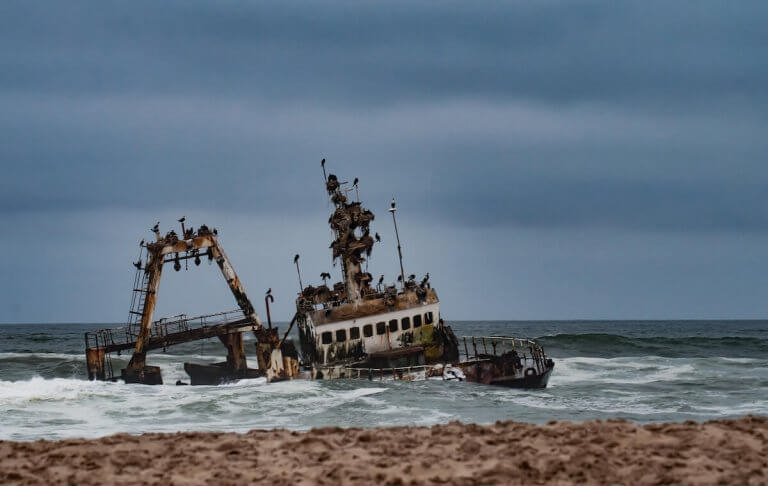· NTT · · 7 min read
Photography Heaven
Why Every Photographer Needs to Visit Namibia

Among the many alluring reasons to visit Namibia, two stand out bright and clear: the awe-inspiring landscape and the iconic and diverse wildlife. A mobile safari is the best way to see both in all their splendor.
And when you plan to explore with Namibia Tracks and Trails, one thing you’ll definitely want to pack for your safari is a camera. Whether you’re an avid photographer or a casual traveler who likes to snap photos for fun, the sights of Namibia are treasures you’ll want to bring home with you.
Namibia is a big place, with an overwhelming number of beautiful destinations to try and capture. How do you decide where to go to take truly impressive photographs that’ll blow the minds of everyone back home?
From our most famous national parks of Etosha and Namib-Naukluft to the seaside destinations of Walvis Bay and the Skeleton Coast, here are 5 must-photograph locations in Namibia.
Namib Naukluft Park

Namib Naukluft Park
In the southwestern part of Namibia lies the massive Namib-Naukluft National Park, home to some of our country’s most photogenic sites. It’s here in the southern part of the Namib Desert where you’ll find the Sossusvlei salt pan.
This iconic wonder is known for its towering red sand dunes, some of which stretch close to 400 meters into the sky! Particularly spectacular are Dunes 39 & 45, though Dune 7 is the highest. Any make for a worthy subject for photographers — their stark red outlines against a bright blue sky present a case study in landscape profiles, while the view from the top offers the opportunity to capture the surrounding area in all its glory.
Just be ready to climb…and climb, and climb, and climb. It’s a long way up. Another excellent shooting location in the park is Deadvlei, a clay pan with a foreboding name that comes from the ancient remains of trees which have been preserved here. It’s these trees that make this a must-photograph location — their skeletal appearance gives this area an other-worldly vibe that you won’t find anywhere else on planet Earth. Finally, you’ll want to make your way to Sesriem Canyon, a slot canyon near the southern edge of the Naukluft Mountains.
This narrow, winding canyon makes for a great photo opportunity, especially when the sunlight hits just so — craggy walls that rise straight up on either side create a unique interplay between light and shadow.
Etosha National Park

Etosha National Park
Etosha is a must-visit destination for photographing the most treasured of Namibia’s wildlife offerings. Situated in the north-central region of Namibia, this park is home to countless species native to this country.
That includes elephants, lions, giraffe, and rhino, to name just a few. The best time to visit for most wildlife photography in Etosha is in the dry season (May to November). This is when animals rely on watering holes, which makes for exciting and relatively easy wildlife sightings.
But don’t forget the famous flamingo migration, when millions of the pink birds settle in the rain-soaked salt pans. To photograph this wonder of nature, you’ll want to visit in the wet season, specifically January to February.
One tip for photographers hoping to snap pics of animals in Etosha, or anywhere in Namibia for that matter: the early bird gets the worm! Many animals sleep during the day. Activity is highest at sunrise, so you’ll need to wake up early to get the best shots.
Walvis Bay

Walvis Bay
Walvis Bay on Namibia’s Atlantic coast offers a bevy of opportunities to photograph sea life — seals swimming alongside your boat, whales crashing through the waves, and much more. We recommend taking a boat out for a day to get the best angles on dozens of types of creatures, including:
- Seals
- Flamingos and Penguins
- Pelicans, Petrel, Oystercatcher, and Cormorants
- Sunfish
- Leatherback Turtles
- Whales (Southern Right, Humpback)
- Orca
While you’re in the area, visit the old-world desert town of Swakopmund — it’s pier makes for particularly gorgeous photos at sunset
Skeleton Coast National Park

Skeleton Coast National Park
This park has endless incredible photo-worthy features — one of the most inspiring being the shipwrecks that dot the coastline. These skeletons of the sea rise eerily up out of the water, while others lay washed up on the beach’s sand.
Be sure to stop at Möwe Bay to snap photos of the seals that have formed a colony there. Their playful nature is irresistibly photogenic! Here you can explore an abandoned diamond mine, with long-forgotten dreams of fortune dried up by the desert and erased quite literally by the sands of time.
What remains is a ghost town — an evocative dreamscape waiting to be captured by your lens. Then there are the dunes that line the beach, offering a great vantage point for dynamic landscape shots that highlight the drastic meeting point of the desert and the ocean.
Twyfelfontein
This UNESCO World Heritage Site is famous not so much for its natural beauty, but for the beauty that early humans imbued upon it thousands of years ago. The rocks in the valley of Twyfelfontein are decorated with thousands upon thousands of petroglyphs, some originally etched here as long as 10,000 years ago.
Most of these feature depictions of animals and their tracks, making for a unique way to photograph the wildlife of Namibia.
 +264 81 269 7271
+264 81 269 7271
 info@namibia-tracks-and-trails.com
info@namibia-tracks-and-trails.com








